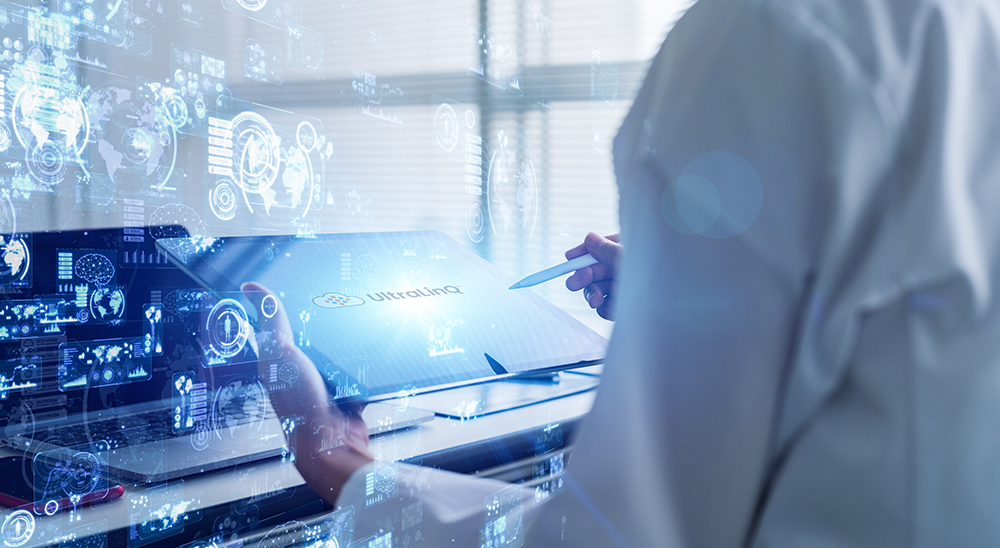
Holter Devices’ Role in the Future of Cardiology
The boom of wearable devices in healthcare represented a seismic shift in how medical professionals and patients approach health and wellness. The surge is fueled by a growing desire for self-monitoring and democratizing health data, merging health and wellness with consumer technology. Recent advancements in sensor technology, data analytics, and characteristics that make such devices comfortable or unnoticeable to the user have helped accelerate adoption, shaping the future of cardiology.
What are Biosensors?
Devices, like fitness trackers, popularized consumer wearables and provided general health insights, encouraging individuals to engage actively with their wellness journey. These gadgets track a range of metrics such as daily step count, heart rate, and sleep patterns, offering a snapshot of one’s lifestyle and well-being. On the other hand, clinical wearables, which include advanced smartwatches capable of performing ECGs, continuous glucose monitors, and smart fabrics that can measure vital signs, offer a level of clinical accuracy and reliability on par and are steps above traditional medical equipment—like the leap we’ve taken with Holter monitors. Clinical wearables are revolutionizing advanced care by providing vital, real-time data that was once only accessible in clinical settings. These clinical-grade devices empower patients with self-monitoring capabilities, are integral to remote patient monitoring, and provide healthcare providers with precise, continuous streams of medical-grade data. The data enables a more informed and dynamic approach to diagnosis and treatment, significantly enhancing patient outcomes.
Recent Advancements in Biosensors
In cardiology and heart monitoring, the advancement of sensors and embedded technology complemented the remarkable evolution of Holter devices for ECG collection. Traditionally, Holter monitoring involved a patient being tethered to a cumbersome, wired device, which was inconvenient and intrusive, limiting the patient’s mobility and comfort. However, recent years have seen a transformative shift towards sleek, wireless Holter monitors that epitomize convenience and technological sophistication. These next-generation devices are more discreet and comfortable for the wearer and boast enhanced capabilities such as extended monitoring durations, superior data accuracy, and advanced algorithms for arrhythmia detection. The integration of wireless technology has enabled seamless data transmission to healthcare providers, ensuring timely and more informed clinical decision-making.
Applications of Biosensors in Cardiology
There are many reasons clinicians would want a patient to wear a Holter device of such design, but the primary reason is detecting and managing arrhythmias. Advanced Holter devices continuously record the heart’s electrical activity, making them invaluable in detecting arrhythmias—abnormal heart rhythms ranging from benign to life-threatening. They help identify sporadic episodes of conditions like atrial fibrillation, ventricular tachycardia, or bradycardia, which might not be captured during a standard ECG test in a doctor’s office or using a traditional 24- to 48-hour wired Holter Monitor.
Parallel to this use case is their usefulness in early detection and time recognition of diseases.
Early detection of arrhythmias, which may evade detection during routine clinical examinations, facilitates timely intervention or care, preventing exacerbation of abnormalities or additional damage from comorbidities to the patient. In this case, they can facilitate preventive care strategies, potentially averting severe cardiac events and reducing the need for emergency interventions or hospitalizations.
Another important application is for evaluating symptoms related to heart conditions.
Patients experiencing unexplained cardiac symptoms such as dizziness, palpitations, fainting spells (syncope), or shortness of breath can benefit from Holter monitoring. The device helps correlate these symptoms with the heart’s electrical activity, aiding physicians in diagnosing the underlying cause and determining the most appropriate treatment plan.
Holter devices assess the effectiveness of cardiac treatments. Holter monitors are used to evaluate the effectiveness of treatments for heart conditions, such as medications for arrhythmias, and the success of procedures like cardiac ablation, valve repair, and replacement. By furnishing comprehensive ECG data pre- and post-treatment, these devices empower cardiologists to make informed decisions regarding treatment modifications, validate the efficacy of interventions, and alert them to emerging complications or improvements in preexisting conditions.
Holter devices have become an indispensable tool in cardiology, offering widespread benefits by enhancing diagnostic accuracy and patient care management for clinicians and patients without overstating their impact.
Why Biosensors are the Future of Cardiac Care
The future of cardiology care is now. The need for highly accurate and robust Holter biosensors and interpretation platforms that seamlessly integrate into clinical workflow and patients’ lifestyles and the growing emphasis on remote monitoring has never been more critical. Several key factors are driving this.
With the aging global population and rising incidence of lifestyle-related diseases, there’s a significant increase in cardiac conditions such as arrhythmias, heart failure, and hypertension. Holter biosensors provide a practical solution for continuously monitoring and managing these conditions, catering to a broader patient demographic and clinical necessity.
The shift towards accessible, patient-centric healthcare emphasizes convenience, comfort, and patient engagement in treatment plans. Holter biosensors that blend into the patient’s lifestyle enhance adherence to monitoring protocols, ensuring more consistent and reliable data collection.
At the heart of the problem is the impact of continuous monitoring that allows for the early detection of potential cardiac issues before they escalate into more severe conditions and data-driven decisions. This proactive approach can prevent hospitalizations, reduce healthcare costs, and, most importantly, save lives. It will help physicians tailor treatment plans to individual patient needs, leading to better outcomes and more efficient use of healthcare resources.
How UltraLinQ’s Holter Service is Shaping the Future of Cardiac Care
With a decade of leadership in cardiac healthcare, UltraLinQ has been pivotal in processing and facilitating the analysis of vast amounts of diagnostic images, enhancing collaborative patient exam reviews through its advanced PACS and reporting system. With the launch of a Holter & ECG Interpretation Software, UltraLinQ underscores its commitment to revolutionizing cardiology care with its holistic, cutting-edge platform designed to meet the comprehensive needs of clinicians, patients, and the healthcare community.
Stepping into the cardiac monitoring technology market, UltraLinQ introduces a Holter service that symbolizes a leap in innovation and practicality aimed at optimizing cardiac health management. With this addition to an already comprehensive cardiology suite, UltraLinQ prioritizes the industry’s needs by delivering significant advantages to clinicians and patients. It also accelerates its steadfast mission to lead advancements in heart health for the broader healthcare community.






